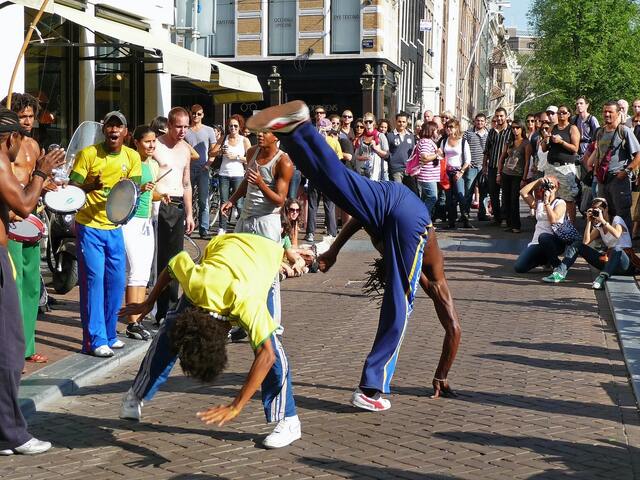A Beginner’s Guide to Language Learning

Unsplash: No Revisions
You’re about to start learning a new language, but you don’t know where to start. Well, don’t you worry, because you’re experiencing a universal dilemma we all have when it comes to learning a new language.
How do you decide what language to learn? How do you start learning a new language? How do you use a language learning app? – are just three common questions we all encounter at the beginning of this journey. So breathe in and breathe out. And shake off those pesky nerves. Learning a new language is a fun ride, so brace yourself and let go!
When it comes to learning a new language, there is no right or wrong way. You can learn by watching movies. You can learn by listening to music. You can learn by reading books. Whatever method you choose when learning a new language is up to you, but make sure to follow one simple rule: HAVE FUN!
Interested in reading about The Science Behind Gift-Giving in Spanish or reading a story about The Pope’s Astronomer in Italian? Well, we’ve got those so make sure to download Beelinguapp now!
If learning a new language is one of your top New Year’s Resolutions, then look no further and follow our simple guide on how to begin!
Step 1: Pick A Language
There are so many languages to choose from, so the question is “what language do you want to learn?'' You can choose any language! You can choose a romance language like Italian, French, or Spanish. You can even choose a Cyrillic language like Russian. Or you can choose a Scandinavian language like Swedish. It might be difficult to sift through the thousands of languages out there. But once you’ve figured out what language you want to learn, the rest is history.
If you’re still having some difficulty deciding what language to learn, check out our guide of “6 Easy Languages To Learn” and choose from there!
Step 2: Choose A Method Of Learning
Learning a language is not a one-way street. You can learn a language using different methods. And one very effective way of learning is through parallel-texts with Beelinguapp. With parallel texts, you have your target language on one side and your native language on the other.
For example, if you want to improve your Spanish skills you can read a story like Tequila: the Taste of Mexico in both Spanish and English. As you read along, you can highlight words that you don’t recognize and use the English translation to help you understand the story better.
At the end of the story, you can answer the short quiz to help assess your understanding. So if you’re understanding what you’re reading and listening to, then you’re off to a great start.
Step 3: Set A Goal
When learning a new language, another important thing to remember is that you must: set a goal. Setting a goal helps you identify what you want to achieve, whether it be learning how to count or learning how to read. In addition, this also helps assess your learning, a way to see where you are on the road to fluency. The more goals you accomplish, the more confident you will be when setting new and bigger goals.
Your goal doesn’t have to be anything grand or ambitious. You can begin by learning the alphabet or the days of the week. Start small and have fun with what you're trying to do. The more you achieve your goals, the more motivated you become when learning a new language. Maybe then your next goal would be reciting an Emily Dickinson poem in Korean or memorizing some fun and funky English tongue twisters!
Step 4: Practice What You’ve Learned
Language immersion is a fantastic method to put what you've learnt into practice. After a quick language lesson, you might not be able to carry on a full conversation, but that's fine. Even if you speak in broken sentences or conjugate a verb incorrectly, that is better than not practicing at all. Fluency takes a long time, so long as you're honing your skills one way or another, you’re doing something right!

Giphy: HBO Max
Learning a new language is like learning how to ride a bike. You start learning with training wheels and you keep practicing as much as you can until those training wheels are off. Despite all the hurdles and the falls, you get back up and ride again until you’ve mastered the art of riding a bike.
Similar to language learning, you need all the support and encouragement at the beginning. But, once you’re confident enough and have reached the level of proficiency you want, then you’re ready to face the world head-on. After all, mastering a language is a lifelong process.
Get Beelinguapp

